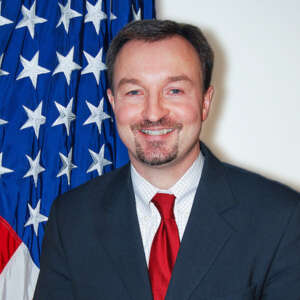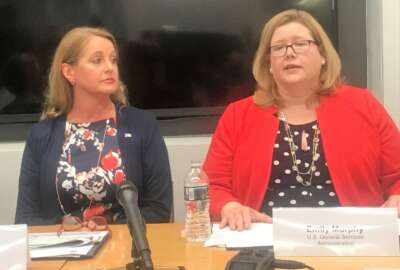Legacy financial management federal providers must define their roles in new approach
Matt Miller, the acting commissioner for the Bureau of Fiscal Service in the Department of Treasury, said he hopes the four legacy shared services providers are...
As the Quality Service Management Office (QSMO) for federal financial management continues to outline its long-term strategy, the Bureau of Fiscal Service isn’t forgetting about the last two decades of work.
The fits and starts and the successes and the failures to try to consolidate and standardize agency financial systems is weighing heavily on this governmentwide effort.
Matt Miller, the acting commissioner for the Bureau of Fiscal Service in the Treasury Department, said the four legacy federal shared service centers at the departments of Agriculture, Interior, Transportation and Treasury will continue to play a big role in this long-standing effort.

“Part of the underlying guidance and part of our charge as the QSMO is to engage with agencies broadly, as agencies need to be consumers in this marketplace. But in addition to that agency engagement, we have a separate work stream or track of engagement, specifically with those four legacy providers to try to determine what is their appetite to continue to provide those type or similar type services in the future in the marketplace, ensuring that the senior leadership of their parent organization support that. So we’ve had a lot of engagement with those providers trying to get clarity around that,” Miller said on Ask the CIO. “While all the agencies can be consumers of the marketplace, we would expect that even when these federal providers that want to offer their services in the marketplace, we still would be looking for their commitment that they ultimately would be also consumers in the marketplace. What I mean by that is, again, really to try to get to more standard, cloud-based modern financial systems, reduce the number of different systems that are out there with all the variations of configurations of systems at agencies.”
Miller said part of the discussion with the four legacy shared services providers is whether they too will modernize their technology offerings, and even become early adopters of the technology standards.
The challenge for these federal providers, of course, is the funding issue and whether or not they have the money to upgrade their technology infrastructure. Funding has been one of the biggest obstacles to broad adoption of shared services over the last 20 years.
“The successes [are] more prevalent when it comes to smaller agencies as opposed to the medium- to large-sized agencies, although Treasury Administrative Resource Center (ARC) provides services to the Department of Housing and Urban Development, a cabinet level agency, and then most recently, Transportation’s Enterprise Service Center just migrated the Office of Personnel Management into their shared solution. So there’s been some level of success,” Miller said. “We’re trying to take the good from those and then learn where there’s opportunities. The underlying premise is standardization and reuse, where [we] can leverage things that are common, rather than creating and building customer unique. I think that one of the key areas of distinction in this approach moving forward, that we think will really be beneficial, is much more of a focus on the customer and the customer experience. That’s one of our guiding principles.”
Customer-centric, not provider-centric
The QSMO released a request for information in June laying out more specifics around how it plans to create a marketplace to standardize and modernize federal financial systems.
While the desire to move large agencies to these financial management shared service providers has struggled over the last almost two decades, the QSMO’s approach is trying to combine the public and private sector expertise.
Miller said the move toward a customer-centric marketplace from a provider centric one is among the biggest lessons Treasury learned over the last several years.
“What we’re looking at is a marketplace that will that will allow interaction with both commercial and federal, but still trying to allow that flexibility and choice but stamp that incorporating the standards into the solution,” he said. “With the prior marketplace, there were these four solutions, and if they met your needs great, but especially for larger agencies, if there were capabilities in the software or the related services that didn’t meet their needs, there wasn’t as much flexibility there to be responsive. With this marketplace, that is a combination of commercial and federal providers, it is much more of a customer-centric or a solution-centric marketplace that is what we are building.”
Miller said with 56 agency financial management systems coming toward the end of life by 2025, there is a going to be a significant need for the marketplace’s services.
Miller said the QSMO hopes to get the first set of services in place by the end of fiscal 2022 to begin serving some agencies like the departments of Commerce and Homeland Security, which have more immediate needs to modernize.
“We’ve been very intentional about the engagement with both industry and agencies. We think that critical input into building a marketplace, that industry is interested in support[ing] and that agencies are interested in see value in coming to consume the services,” he said. “The hope is that focus on the customer experience and in the collaboration with industry and agencies we really can move the needle on shared services beyond maybe where it’s been moved through past initiatives.”
Copyright © 2025 Federal News Network. All rights reserved. This website is not intended for users located within the European Economic Area.
Jason Miller is executive editor of Federal News Network and directs news coverage on the people, policy and programs of the federal government.
Follow @jmillerWFED







